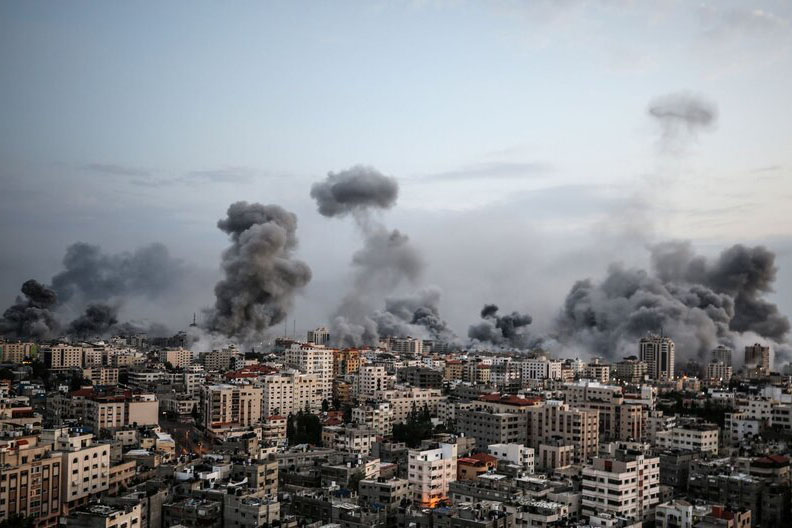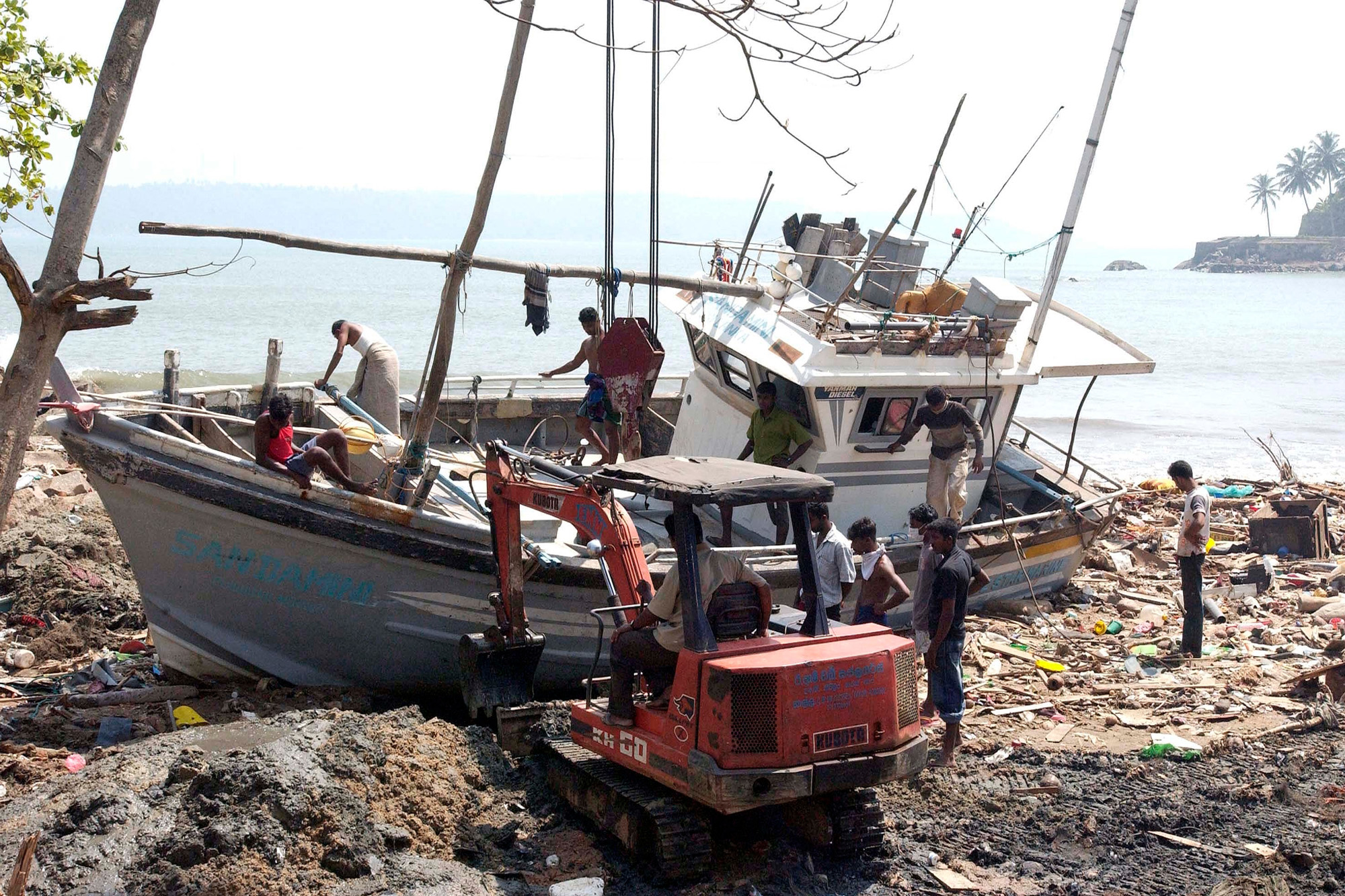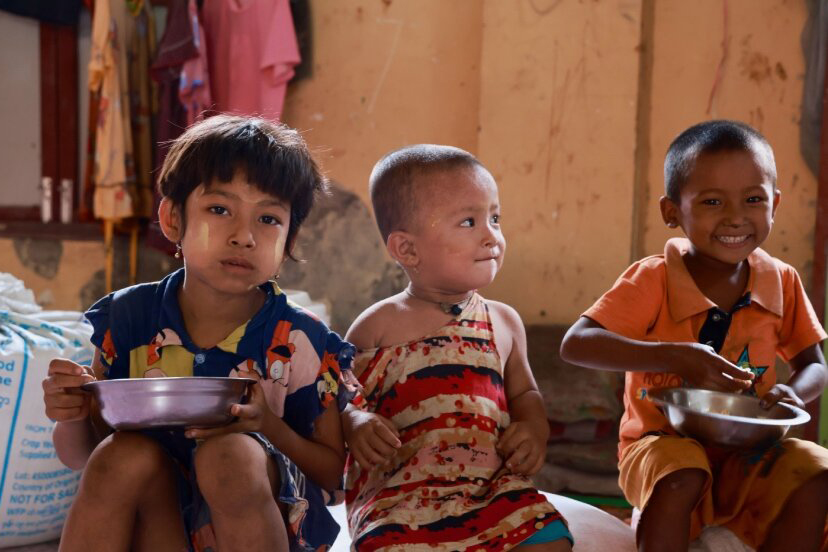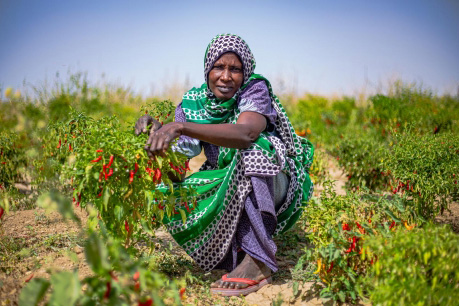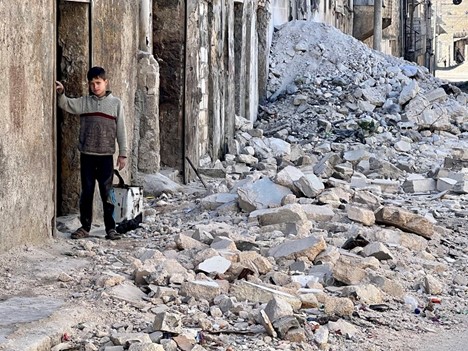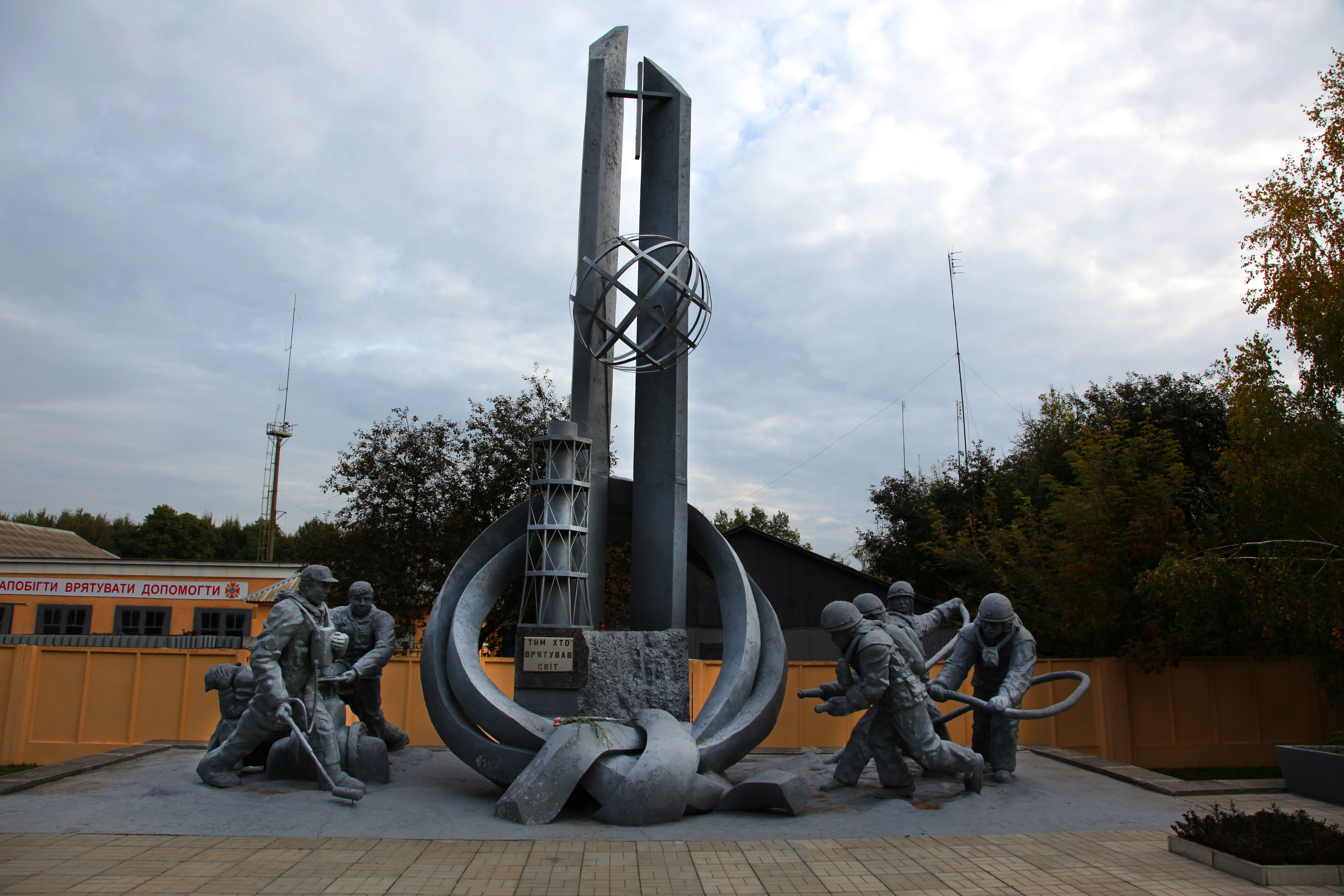Hind Khoudary, bears witness to the suffering befalling Gaza and how she and others are surviving. Seven weeks of relentless bombardment has left 1.8 million people displaced and acutely hungry.
Disaster Relief
Tsunamis pose a serious threat, especially to women, children, people with disabilities, and the elderly. This year's World Tsunami Awareness Day (5 November) aims to raise awareness about reducing risks and enhancing community preparedness. Although rare, tsunamis can be devastating, with an average death toll of 4,600 per disaster. The 2023 theme, "Fighting Inequality for a Resilient Future," calls for all-society engagement and partnership in disaster risk reduction.
All too often, people who contribute the least to climate change are affected the most. Such is the case in Bangladesh, one of the most climate disaster-prone countries in the world. Floods, cyclones and extreme storms frequently displace people from their homes. Women and girls pay the highest price. Humanitarian needs directly impacting them – including access to contraception; safe births; protection from violence – are often overlooked in times of crisis. "When climate disaster strikes, it is a disaster for women and girls," said Dr. Natalia Kanem, UNFPA Executive Director, "we have to change the mentality to prioritize what women and girls are going to need".
Nearly two weeks after Cyclone Mocha, a grim certainty looms as the coastal areas of Myanmar and Bangladesh enters monsoon season. The cyclone has sent food prices soaring and wiped-out people’s slender food stocks. But now Mocha’s devastation has only deepened hunger already sharpened by the country’s conflict and political and economic crises. WFP has distributed hot meals and emergency food assistance to thousands of people in the immediate aftermath of the storm. A funding shortfall is threatening WFP's response in both countries.
Every year, the Far North region of Cameroon is the setting of devastating floods that leave thousands homeless. Within the department of Logone-et-Chari are among the most affected areas. Torrential rains and rising waters destroy homes and crops, jeopardizing people's livelihoods and food security. Since 2021, FAO has been improving the anticipatory action and emergency response system in Cameroon, analysing the food and nutrition security impacts of humanitarian crises. The project helps governments and communities better prepare, anticipate, analyse and make decisions ahead of a crisis.
The UN marks the 37th anniversary of the accident at the Chernobyl nuclear power plant (26 April 1986) – one of the most serious nuclear accidents in history. Hundreds of thousands of people were affected by radiation. Some 350,000 people were forced to leave their homes in severely contaminated areas, with a deeply traumatic and lasting impact on their lives. The International Chernobyl Disaster Remembrance Day aims to continue raising awareness for the need of environmental and health monitoring of the Chernobyl-affected regions and communities – towards the common good.
Syria was a largely forgotten crisis until it was rocked by deadly earthquakes on its border with Türkiye. More than half of Syria’s population, or 12.1 million people, are food-insecure with a further 2.9 million on the brink of food insecurity. Nutrition is becoming a significant problem as malnutrition rates reach levels never seen before. Since the first earthquake on 6 February, WFP has provided immediate food assistance to over 2 million affected people in Syria, including 1.4 million in non-Government-controlled areas in the northwest. WFP urgently requires donation to maintain regular emergency assistance across Syria.
In a covered marketplace in Aleppo’s historic Old City, families sit crammed inside the small retail units, huddled together for warmth and bundled in layers of clothes and thermal blankets. They arrived here in the aftermath of the devastating earthquakes that struck southern Türkiye and northern Syria. The families now living in the hastily organized shelter in Aleppo’s Al-Harir souq are here because they have nowhere else to go, unable or too afraid to return to homes damaged or destroyed in the earthquakes. UNHCR was able to deliver much-needed aid to those sheltering in the mosque.
The devastating 7.8-magnitude earthquake near the Türkiye-Syria border in the early hours of 6 February 2023 was followed by another one nearly as strong. The earthquakes that struck Türkiye and Syria caused one of the biggest disasters to impact the region. The United Nations and its agencies are deploying disaster assessment experts; coordinating search and rescue teams; providing emergency relief, food, medical supplies, thermal blankets and other life-saving items. UN convoys have crossed into northern Syria through the Bab al-Hawa crossing delivering shelter and relief supplies.
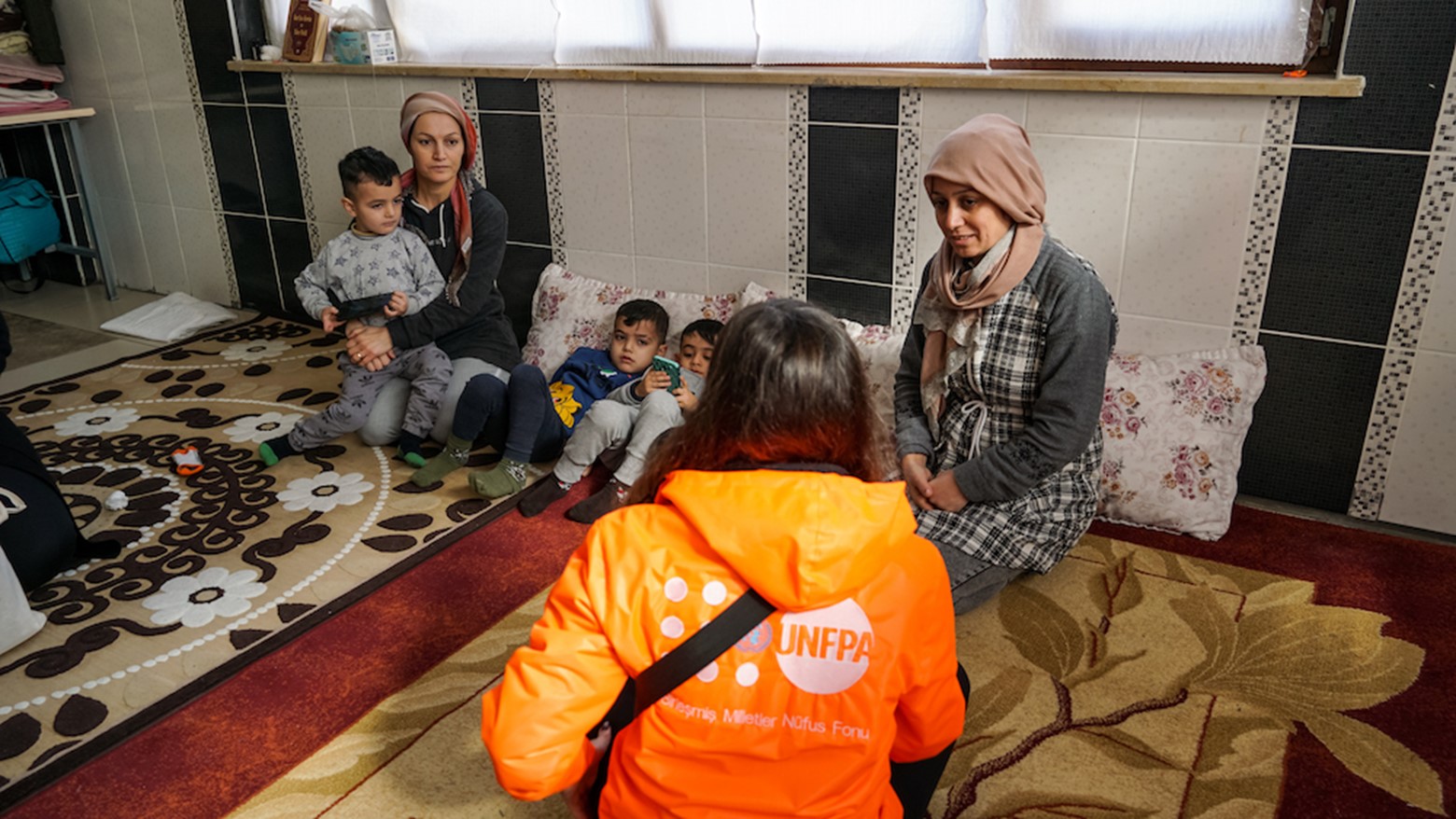
I lost everything in one minute
Early in the morning of 6 February, while most people were still sleeping, a powerful earthquake rocked Türkiye, carving death and destruction in the country’s southeast and in neighbouring Syria. Among the estimated 15 million people affected in Türkiye are over 214,000 pregnant women – of whom almost 24,000 are due to give birth in the next month. With essential medical supplies wiped out across the two countries and hundreds of health centres, maternity facilities and safe spaces damaged, UNFPA is on the ground across affected areas in both Türkiye and Syria and remains dedicated to re-establishing services critical to the well-being and protection of millions of vulnerable, traumatized women and girls in urgent need of maternal care and support.
The devastating floods in 2022 were Pakistan’s worst natural disaster in decades. They left one-third of the country submerged, people forced into poverty, and 8 million displaced. An enormous challenge lies ahead. Flood damages and economic losses reached over US$30 billion, and reconstruction needs are estimated at US$16.3 billion. The International Conference on Climate Resilient Pakistan aims to bring the world together to back a strategy for rehabilitation and reconstruction that secures international support for building Pakistan’s climate resilience and adaptation.
Tsunamis can be deadly, but they needn’t be. Early warning and early action are effective tools to protect people, saving lives, and preventing the hazard from becoming a disaster. To be effective, tsunami early-warning systems must cover every at-risk person, they must be multi-hazard, and communities must be prepared so they can act quickly. For World Tsunami Awareness Day (5 Nov), the United Nations calls on countries, international bodies and civil society to raise tsunami awareness and share innovative approaches to risk reduction. #TsunamiDay #GetToHighGround
This animated short film tells the story of the 12-year-old girl Martina and the community of Juan Fernández Island in Chile, who survived an incredibly destructive tsunami in 2010. The short highlights the importance of articulating local knowledge, community engagement, disaster preparedness, and early warning systems to help save lives when disaster strikes. Its goal is to educate coastal communities around the world about the risk of tsunamis. This project was carried out in partnership with UNESCO and the UNDRR.
The UN marks the 36th anniversary of the accident at the Chernobyl nuclear power plant (26 April 1986) – one of the most serious nuclear accidents in history. Hundreds of thousands of people were affected by radiation. Some 350,000 people were forced to leave their homes in severely contaminated areas, with a deeply traumatic and lasting impact on their lives. The Chernobyl disaster was contained by governments working with academics and civil society for the common good.
Rising sea levels and extreme weather pose serious threats to communities around the world. Small island developing states in particular are vulnerable. Often only a few metres above sea level, these countries are on the frontlines of climate change, experiencing its impacts most severely. When disaster strikes, it’s the damage to infrastructure that puts people’s lives most at risk, causes significant economic costs and hinders development. But what if, instead of posing risks, infrastructure could actually help countries weather the impacts of climate change?

